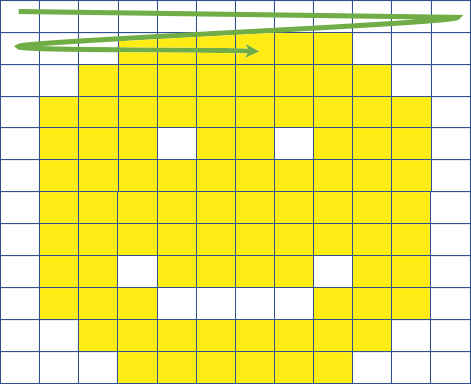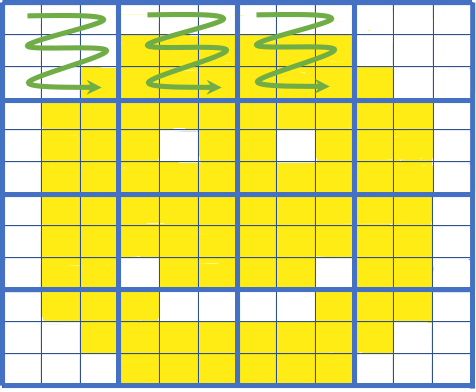The COG data format builds on the established GeoTIFF format that has been accepted as a ESCO standard. Cloud Optimized GeoTIFF relies on two complementary pieces of technology.
The first is the ability of a GeoTIFF to not only store the raw pixels of the image, but to also organize those pixels in ways that are more efficient for cloud storage and retrieval. The second is HTTP GET range requests, that let clients ask for just the portions of a file that they need. Together these enable fully online processing of data by COG-aware clients, as they can stream the right parts of the GeoTIFF as they need it, instead of having to download the whole file.
Traditional row by row organization COG tile organization
.
COG is currently a OGC draft candidate (http://docs.ogc.org/DRAFTS/21-026.html).
Support from commonly used tools
COG-aware software is available both from the perspective of a data provider and data user. Currently tools that offer COG support include:
Geoserver: An open source geospatial data server offers a COG plugin that enables COG support to existing data stores. The plug in allows for image index configuration as well as range reading capability for HTTP and some standard cloud architectures.
QGIS: An open source desktop Geographic Information System (GIS)
Strengths
Efficient Imagery Data Access
COG-aware software can stream just the portion of data that it needs, improving processing times and creating real-time workflows previously not possible
Reduced Duplication of Data
Accessing COG’s with cloud workflows enables diverse software to all access a single file online instead of needing to copy and cache the data
Legacy Compatibility
Traditional GIS software is able to treat Cloud Optimized GeoTIFF’s just like normal GeoTIFF’s, so data providers need only produce one format

